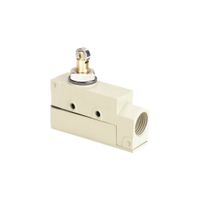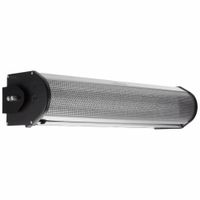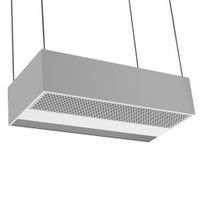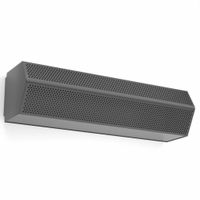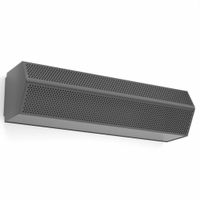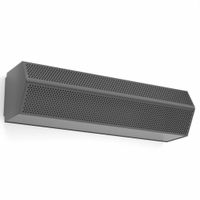Call +(254) 703 030 000 / 751 483 999 / 721 704 777
- Home
- Hvac And Refrigeration
- Ventilation Equipment
- Air Curtains
.....Read More
Frequently Asked Questions
What is the purpose of an air curtain?
An air curtain is a device that creates an invisible barrier of air over a doorway or opening. Its primary purpose is to separate two different environments without restricting physical access. This is achieved by generating a consistent stream of air, usually directed downward, which acts as a barrier to control temperature, prevent the entry of contaminants, and maintain energy efficiency.
One of the main functions of an air curtain is to maintain climate control. By preventing the exchange of air between the inside and outside, it helps in keeping the conditioned air inside, whether heated or cooled, thus reducing energy consumption and costs associated with HVAC systems. This is particularly beneficial in commercial settings like retail stores, restaurants, and warehouses, where doors are frequently opened.
Air curtains also serve as a barrier against pollutants, dust, fumes, and insects. This is crucial in environments that require high levels of hygiene, such as hospitals, laboratories, and food processing facilities. By minimizing the infiltration of external contaminants, air curtains help maintain a clean and safe environment.
Additionally, air curtains can enhance comfort for occupants by reducing drafts and maintaining a stable indoor temperature. They also contribute to noise reduction by acting as a sound barrier, which is advantageous in busy urban areas or industrial settings.
In summary, the purpose of an air curtain is to improve energy efficiency, maintain environmental separation, enhance comfort, and ensure cleanliness by creating an effective barrier of air across openings.
How do air curtains work?
Air curtains work by creating an invisible barrier of high-velocity air across an opening, such as a door or window. This barrier effectively separates two different environments, typically the inside and outside of a building. The air curtain is installed above or alongside the opening and consists of a fan and a nozzle or series of nozzles that direct a stream of air downward or across the opening.
When the air curtain is activated, the fan draws in air from the surrounding environment and forces it through the nozzles at high speed. This creates a continuous stream of air that forms a barrier. The air stream is usually angled slightly outward to ensure that it covers the entire opening and prevents the mixing of air from the two sides.
The primary function of an air curtain is to maintain the desired indoor climate by preventing the infiltration of outside air, which can carry dust, pollutants, insects, and temperature variations. In heated or air-conditioned spaces, air curtains help in reducing energy consumption by minimizing the loss of conditioned air and the entry of unconditioned air.
Air curtains are commonly used in commercial and industrial settings, such as retail stores, warehouses, and food service establishments, where doors are frequently opened and closed. They are also used in cold storage facilities to maintain temperature control.
In addition to energy savings, air curtains improve comfort by reducing drafts and maintaining a stable indoor environment. They also enhance hygiene by acting as a barrier against airborne contaminants and pests. Overall, air curtains are an effective solution for maintaining environmental separation while allowing easy access through open doorways.
What are the benefits of using air curtains?
Air curtains offer several benefits across various applications:
1. **Energy Efficiency**: By creating an invisible barrier of air, air curtains help maintain the desired indoor temperature, reducing the load on heating and cooling systems. This leads to significant energy savings and lower utility bills.
2. **Climate Separation**: They effectively separate different temperature zones, preventing cold air from entering in winter and hot air in summer, thus maintaining a comfortable indoor environment.
3. **Pest Control**: Air curtains act as a deterrent to flying insects and pests, reducing the need for chemical pest control methods and maintaining hygiene, especially in food service and retail environments.
4. **Improved Air Quality**: By preventing the entry of dust, pollutants, and fumes, air curtains contribute to better indoor air quality, which is crucial for health and comfort in commercial and industrial settings.
5. **Enhanced Comfort**: They minimize drafts and temperature fluctuations, ensuring a more consistent and comfortable environment for occupants and customers.
6. **Noise Reduction**: Air curtains can help reduce noise pollution by acting as a barrier to external sounds, creating a quieter indoor environment.
7. **Increased Safety**: By keeping doors open without compromising on climate control, air curtains facilitate easy access and improve visibility, enhancing safety in high-traffic areas.
8. **Operational Efficiency**: In retail and commercial spaces, air curtains allow for open-door policies that invite customers in while maintaining climate control, potentially increasing foot traffic and sales.
9. **Cost-Effective**: The initial investment in air curtains is often offset by the savings in energy costs and reduced wear and tear on HVAC systems.
10. **Versatility**: Suitable for a wide range of applications, from retail stores and restaurants to warehouses and cold storage facilities, air curtains are adaptable to various door sizes and operational needs.
How do you install an air curtain?
1. **Select Location**: Choose the appropriate location above the door where the air curtain will be installed. Ensure it covers the entire width of the doorway.
2. **Gather Tools and Equipment**: You will need a drill, screws, anchors, a level, measuring tape, and possibly a ladder or lift.
3. **Measure and Mark**: Measure the width of the door and mark the positions for the mounting brackets on the wall above the door. Ensure the air curtain will be level and centered.
4. **Install Mounting Brackets**: Drill holes at the marked positions and insert anchors if necessary. Secure the mounting brackets to the wall using screws.
5. **Mount the Air Curtain**: Lift the air curtain and align it with the mounting brackets. Secure it in place using the provided hardware. Ensure it is firmly attached and level.
6. **Electrical Connection**: Connect the air curtain to the power supply. This may require hardwiring to an electrical circuit or simply plugging it into an outlet, depending on the model. Ensure the power is off during installation.
7. **Test Operation**: Turn on the power and test the air curtain to ensure it operates correctly. Check for proper airflow and adjust settings as needed.
8. **Adjust Settings**: Set the air curtain to the desired speed and temperature settings, if applicable. Ensure it activates when the door opens.
9. **Final Checks**: Inspect the installation for stability and safety. Ensure all components are securely fastened and that there are no loose wires.
10. **Maintenance Plan**: Establish a regular maintenance schedule to clean filters and check for any operational issues.
What are the different types of air curtains?
Air curtains are devices used to create an invisible barrier of air over doorways or openings to separate different environments. They come in various types based on their design, application, and installation. Here are the main types:
1. **Non-Recirculating Air Curtains**: These are the most common type, where air is drawn from the surrounding environment and blown across the opening. They are typically used in retail stores, restaurants, and commercial buildings.
2. **Recirculating Air Curtains**: These systems capture the air after it passes through the opening and recirculate it back into the system. They are more energy-efficient and are often used in environments requiring strict temperature control, such as cold storage facilities.
3. **Heated Air Curtains**: These air curtains include a heating element to warm the air before it is blown across the opening. They are ideal for cold climates where maintaining indoor temperature is crucial.
4. **Unheated Air Curtains**: These do not have a heating element and are used in applications where temperature control is not a primary concern, such as in warehouses or factories.
5. **Industrial Air Curtains**: Designed for large openings and heavy-duty applications, these air curtains are robust and can handle high air volumes. They are used in loading docks and large industrial facilities.
6. **Commercial Air Curtains**: These are used in smaller openings like those in retail stores, restaurants, and office buildings. They are designed to be aesthetically pleasing and quieter.
7. **Recessed Air Curtains**: Installed within the ceiling or wall, these air curtains are hidden from view, providing a seamless look. They are often used in high-end retail or office environments.
8. **Vertical Air Curtains**: Installed on the sides of an opening, these are used when overhead space is limited or when a horizontal installation is not feasible.
Each type of air curtain is designed to meet specific needs, whether for energy efficiency, aesthetic appeal, or environmental control.
How do you maintain and clean an air curtain?
To maintain and clean an air curtain, follow these steps:
1. **Power Off**: Always turn off the air curtain and disconnect it from the power source before performing any maintenance to ensure safety.
2. **Regular Inspection**: Conduct regular inspections to check for any visible damage or wear and tear. Look for unusual noises or vibrations that might indicate a problem.
3. **Clean the Exterior**: Wipe down the exterior surfaces with a damp cloth to remove dust and dirt. Avoid using harsh chemicals that could damage the finish.
4. **Filter Cleaning**: If the air curtain has a filter, remove it and clean it regularly. Use a vacuum cleaner or wash it with mild soap and water, ensuring it is completely dry before reinstalling.
5. **Fan and Motor Maintenance**: Check the fan and motor for dust accumulation. Use a soft brush or compressed air to clean the fan blades and motor housing. Ensure the motor is lubricated if required, following the manufacturer's guidelines.
6. **Check Electrical Connections**: Inspect all electrical connections for signs of corrosion or loose wires. Tighten any loose connections and replace corroded components.
7. **Inspect the Airflow**: Ensure the airflow is unobstructed. Check for any blockages in the air intake and outlet, and clear them if necessary.
8. **Test Operation**: After cleaning, reconnect the power and test the air curtain to ensure it operates smoothly and effectively. Listen for any unusual sounds and check the airflow strength.
9. **Professional Servicing**: Schedule professional maintenance annually or as recommended by the manufacturer to ensure optimal performance and longevity.
Regular maintenance and cleaning will enhance the efficiency and lifespan of an air curtain, ensuring it continues to provide effective environmental separation.
Can air curtains be used in cold climates?
Yes, air curtains can be effectively used in cold climates. They serve as a barrier to prevent the exchange of air between the inside and outside environments, maintaining indoor temperatures and reducing energy costs. In cold climates, air curtains help keep warm air inside while blocking cold air from entering, which is crucial for maintaining comfort and energy efficiency in buildings. They are often installed above doorways in commercial and industrial settings, such as retail stores, warehouses, and restaurants, to minimize heat loss when doors are frequently opened.
Air curtains work by creating a high-velocity stream of air that forms an invisible barrier. This barrier separates the indoor and outdoor environments, reducing the infiltration of cold air and the escape of warm air. By doing so, they help maintain a stable indoor temperature, reducing the load on heating systems and leading to energy savings.
In addition to energy efficiency, air curtains also contribute to improved indoor air quality by preventing the entry of dust, pollutants, and insects. They can be equipped with heating elements to provide additional warmth, further enhancing their effectiveness in cold climates.
Proper installation and maintenance are crucial for the optimal performance of air curtains. They should be correctly sized and positioned to ensure the air stream effectively covers the entire doorway. Regular maintenance, such as cleaning and checking for wear and tear, ensures they function efficiently.
Overall, air curtains are a practical solution for maintaining energy efficiency and comfort in cold climates, offering benefits such as reduced energy costs, improved indoor air quality, and enhanced comfort for occupants.
